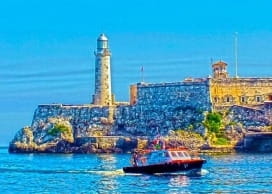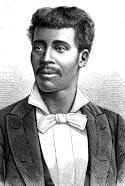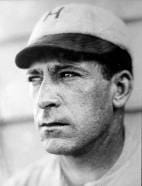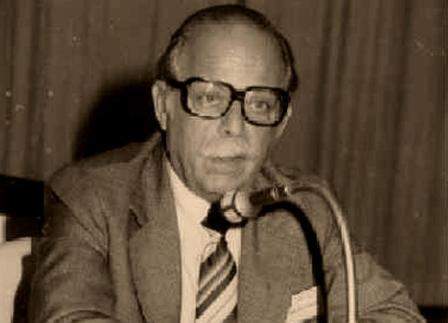
Havana ephemeris. August 4th.
1852. Claudio José Domingo Brindis de Salas is born in Havana.

He came to be called the Black Paganini as well as the Prince of Octaves. The first of these qualifiers was related to the fact of his skin color and to being compared to a relevant Italian violinist.
The other was because of the masterful way he used to play the violin. Son of a musician, from the stage of his childhood, he began to study the violin.
Some time later he moved to Paris where he studied at the conservatory of the French capital.
For five consecutive years he obtained the Honor Award at said Conservatory and from that school he graduated with sufficient prestige to appear and succeed in different French salons and in other countries.
Despite his great successes in Europe, he did not forget his native land. He appeared in Havana at the Payret theater and later at the top of El Louvre and then at the Tacón theater.
The last time he came to Cuba was in 1911. He then began another tour of America, but he was already suffering from tuberculosis. In Argentina he presented himself but not in the way that had characterized him. On June 2, 1911, his death occurred.
Currently his ashes rest in an urn located on a marble pedestal at the headquarters of the Musical Institute for Folkloric Research in the old Church of Paula in Old Havana. In the National Music Museum in Havana, a violin whose ownership is attributed to Claudio José Domingo Brindis de Salas is exhibited.
1890. Adolfo Domingo Luque Guzmán is born in Havana.

Known by the nicknames of Papa Montero and Habana Perfecto, he was a glory of Cuban sports. He turned out to be the first Cuban and Latino pitcher to perform in the Major Leagues of the United States of America.
Since he was a child he liked to practice baseball and started in this sport playing third base for the Vedado club.
He was a great baseball player, coach and director of several teams both in Cuba and abroad, for which all the players obeyed him because of the prestige he earned.
In Cuba he played as a professional since 1912. In the Cuban League as a pitcher in total he got 93 wins against 62 setbacks until he pitched his last game in the 1938-1939 season with the Almendares team. .
In the United States he always made his defense of the Cuban identity evident. Usually in his daily life he wore a straw hat, rancher pants, a guayabera and a "Habano" cigar. He entered the Major Leagues in 1914 with the Boston Braves. He was champion pitcher in 1923 with the Cincinnati Reds team, accumulating 27 wins, with only eight setbacks. Later he joined other Major League teams, in which he remained until 1935. He won 194 games and lost 170. He retired from active sports in 1936, but became a pitching coach, because given his experience and dedication he was hired for the Giants team, until 1945. Regarding his work as a pitcher, it has been affirmed that he was a great pitcher not only because of his Herculean arm, but also because he had a fierce heart, because he had a prodigious retention to keep in mind the strengths and weaknesses of the hitters he faced
He passed away in Havana on July 3, 1957 at the age of 67.
1920. José Domingo Lugo González is born in the town of Regla, Havana.

From a very young age he liked to sing and he did it at parties with family and friends. He was a member of various musical groups. His recordings were present in Vitrolas Habaneras until 1965 with numerous recordings such as "Blancas Margaritas". Musical creations such as "En un beso la vida" achieved popularity with his voice.
He is registered as one of the significant voices of the twentieth century in our country.
He also carried out community work in the town where he was born.
He appeared in the artistic cast of "Boleros de Cuba" along with Elena Burke, Lino Borges, Fernando Álvarez, Pacho Alonso, Benny Moré, Ignacio Villa, (Bola de Nieve) and Roberto Faz, among others.
He passed away on April 25, 2006 in Havana.
1955. The outstanding Cuban painter and caricaturist Rafael Blanco Estera dies in Havana at the age of 69, whose extensive production was characterized by a renovating modernity in the first two decades of the 20th century, for which he was considered a precursor figure of the Cuban movement of new art that developed from the second half of the 20's on the Island. He also distinguished himself as a chess player, as he was three times winner of the Cuban championship (1914, 1920 and 1937). He had been born in the city itself on December 1, 1885.

1986. Francisco Díaz Barreiro dies in Havana.

He was a chemist and historian of science, who published numerous works referring to the cultivation of sugar cane in brochures and specialized magazines on agricultural issues.
He collaborated with the Institute of Literature and Linguistics in the elaboration of a text entitled "Vocabulary of the Sugar Cane", the first of its kind in Cuba.
He was born in Camagüey on December 4, 1914.
1990. Dr. Zoilo Marinello Vidaurreta dies in Havana.

He was born in the city of Santa Clara on August 21, 1919
He graduated as a doctor of medicine on July 20, 1943. In his professional work, he dedicated a large part of his work to cancer research and treatment. He created an important school of Oncology and Radiobiology in the country.
He was president of the Cuban Academy of Sciences and Director of the National Institute of Oncology and Radiobiology until his death.
In 1981, the University of Havana conferred on him, in recognition of his scientific work and his great contributions to Cuban oncology, the category of senior researcher and a doctorate in Medical Sciences.